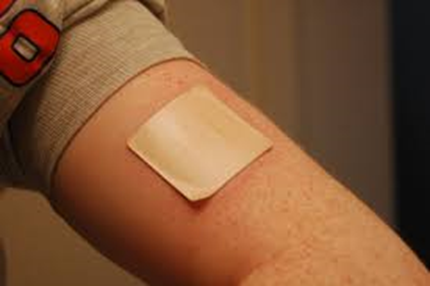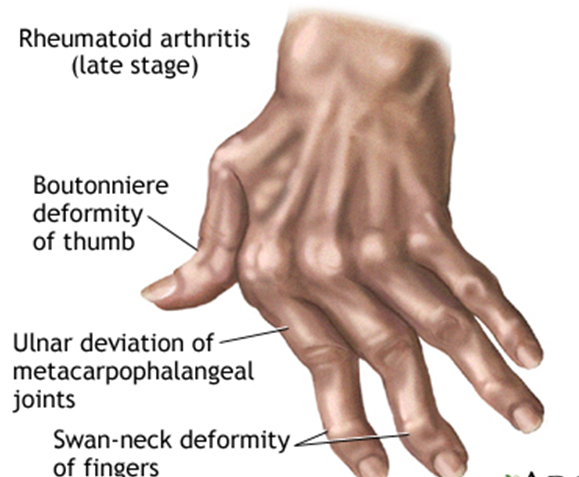A nurse is providing teaching to a client who wants to stop smoking and has purchased a transdermal smoking patch. Which of the following information should the nurse provide?
Rotate the application site every week.
The transdermal patch can cause insomnia.
Leave the patch in place fe8 hr each day.
The transdermal patch releases nicotine rapidly into the bloodstream
The Correct Answer is A
Choice A Reason:
Rotate the application site every week is correct. Rotating the application site is essential to prevent skin irritation or sensitization. Advising the client to apply the patch to a different area of clean, dry, non-hairy skin each time helps reduce the risk of skin irritation at the application site.
Choice B Reason:
The transdermal patch can cause insomnia is incorrect. Insomnia is a potential side effect of nicotine replacement therapy (NRT) patches, including transdermal nicotine patches, but it's not a universal side effect for everyone using the patch.
Choice C Reason:
Leave the patch in place for 8 hr. each day is incorrect. Transdermal nicotine patches are typically worn for 16–24 hours each day, depending on the specific product instructions. Leaving the patch on for a shorter duration might reduce its effectiveness in supporting smoking cessation.
Choice D Reason:
The transdermal patch releases nicotine rapidly into the bloodstream is incorrect. Transdermal nicotine patches deliver nicotine slowly through the skin into the bloodstream over an extended period rather than providing a rapid release. This gradual release helps reduce cravings and withdrawal symptoms associated with smoking cessation.

Nursing Test Bank
Naxlex Comprehensive Predictor Exams
Related Questions
Correct Answer is A
Explanation
Choice A Reason:
Bone loss is correct. Prednisone, a corticosteroid, can lead to decreased bone density (osteoporosis) over extended periods of use, particularly in older adults. This adverse effect increases the risk of fractures and bone-related issues due to the drug's impact on bone health and calcium absorption.
Choice B Reason:
Liver toxicity is incorrect. While prednisone can affect liver function tests in some cases, it is less commonly associated with significant liver toxicity compared to other medications. However, liver function should be monitored during prolonged use.
Choice C Reason:
Hemolytic anemia is incorrect. Prednisone is not typically associated with causing hemolytic anemia as an adverse effect.
Choice D Reason:
Hypoglycemia is not a common adverse effect associated with prednisone use. In fact, prednisone can elevate blood sugar levels and may lead to hyperglycemia or exacerbate diabetes in susceptible individuals.

Correct Answer is B
Explanation
Choice A Reason:
Remove duplicate medications of different dosages from the reconciliation is incorrect. Removing duplicate medications with different dosages from the reconciliation is indeed essential. However, the primary focus during transfer is to compare the current medication list with the new regimen to avoid omissions or discrepancies in the transition process.
Choice B Reason:
Compare the current list of medications to medications the client will receive after transform is correct. Comparing the current list of medications, the client is taking to the medications they are expected to receive after transfer is crucial for ensuring a seamless transition of care. This process helps identify discrepancies, potential interactions, or changes in the medication regimen between settings, ensuring the continuity and accuracy of medication administration.
Choice C Reason:
Omit over-the-counter medications from the at-home medication list is incorrect. Over-the-counter medications should ideally be included in the medication reconciliation process to provide a comprehensive overview of all medications the client is taking, including potential interactions with prescribed medications.
Choice D Reason:
Include medications the client received in the acute setting but will no longer need after transfer is incorrect. The reconciliation process should aim to update the medication list to reflect the client's current and future medication needs accurately. Including medications, the client received in the acute setting but won't need after transfer might introduce unnecessary medications into the new regimen. These should be communicated but not included in the ongoing medication list.
Whether you are a student looking to ace your exams or a practicing nurse seeking to enhance your expertise , our nursing education contents will empower you with the confidence and competence to make a difference in the lives of patients and become a respected leader in the healthcare field.
Visit Naxlex, invest in your future and unlock endless possibilities with our unparalleled nursing education contents today
Report Wrong Answer on the Current Question
Do you disagree with the answer? If yes, what is your expected answer? Explain.
Kindly be descriptive with the issue you are facing.
